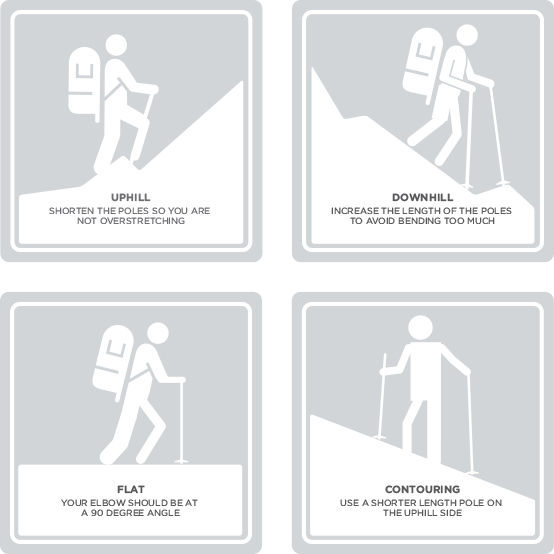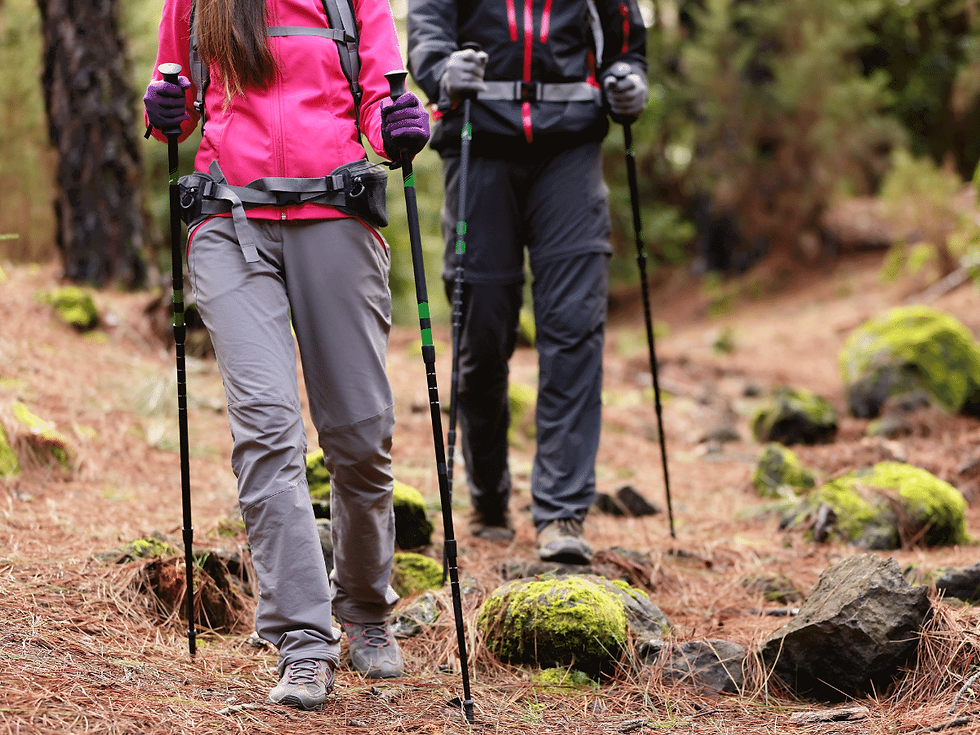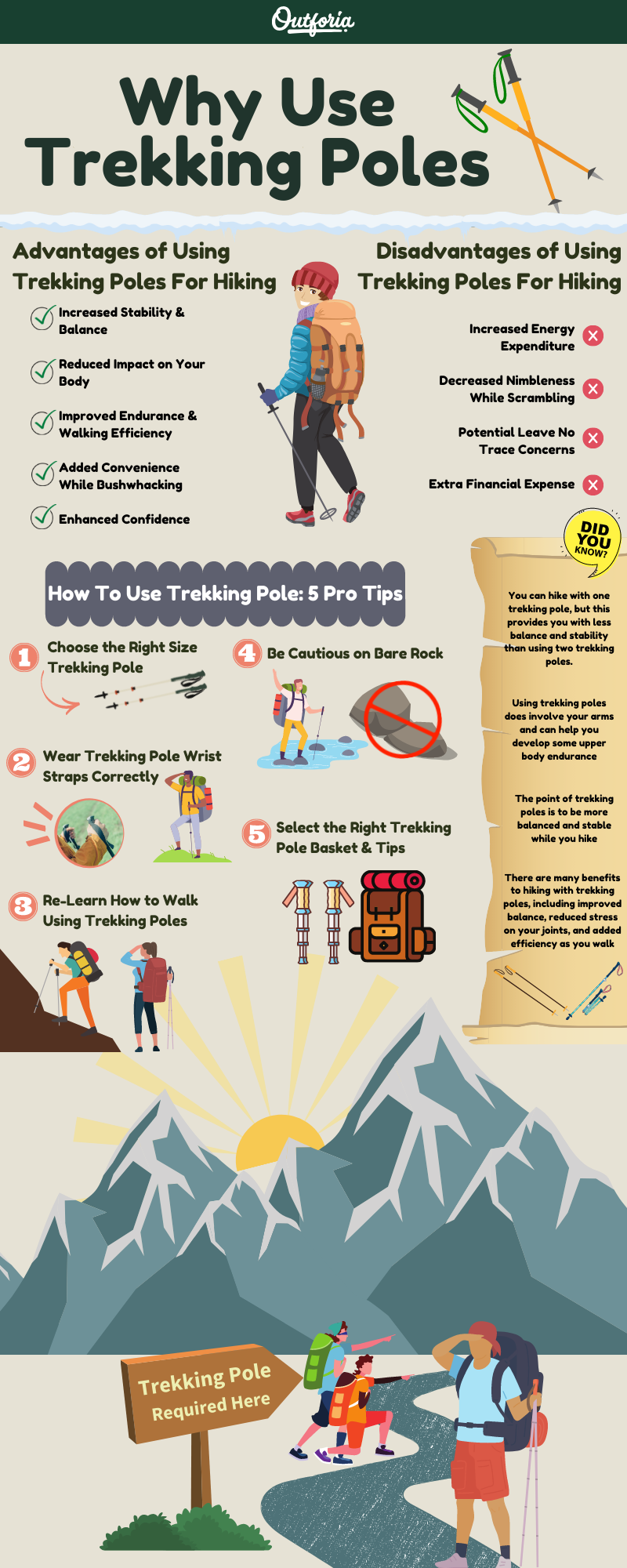Trekking Poles to keep you trucking through winter
- Tara Albright DPT

- Dec 1, 2022
- 4 min read

With the summer season all wrapped up and winter fast approaching, the focus of many shifts towards preparing for ski season. We at PTSC are looking forward to heavy snowfall and plentiful powder days as well, but are not ready to pack away our hiking gear just yet! Fall and early winter can be a fantastic time of year to hike some of the amazing terrain in this great state, while avoiding the crowds that warmer weather can bring. During this time it is important to remember the basics of safe hiking such as having plenty of water, sun protection and layers to protect from the cold. Due to the increased likelihood of precipitation and wet conditions this time of year, it is also worth considering the use of trekking poles! These can be not only a great source of stability while on unstable footing, but can decrease loading through the lower body while hiking and increase arm and shoulder use.

Trekking poles can go by a variety of terms – hiking poles, walking sticks, etc – but all tend to reference the same idea: a vertically oriented object that spans the distance between the hiker’s hand and the ground, allowing the arms to impart force and modify the usual loading patterns of gait. They can be made of many materials, spanning from simple wood to more synthetic plastics and metal alloys. Structural integrity is key; the pole must be resistant to compressive force and being deformed when weight travels vertically through it. They must also be light enough to not be a labor to carry and use. When you are choosing a trekking pole for yourself, it is advisable to consult with both your physical therapist and experts at your local outdoor equipment retailer (REI, Cabela’s, Sportsmen’s Warehouse) to identify what material suits your needs best.

Regarding fit – a trekking pole is most effective when the majority of elbow movement is available during a walking stride. This means that when standing with the handle of the poles in your hand and the tips contacting the ground, your elbow should sit at approximately a 90 degree angle. With this fit, as an individual walks, they will place the pole down and extend through the elbow while moving through the next stride on the other foot. In other words, think of an extremely scaled down version of a pole vault motion. The vaulter will spear the pole into the ground and while the tip is embedded in the ground, they use the extension of the arms (and the rest of the body in the case of pole vaulting) to advance their body forward and clear the bar. A hiker will make use of the trekking pole in a similar fashion, where some of the body weight is offloaded into the trekking pole while advancing the feet into the next step and arm extension will aid in propelling the body forward. For a specific demonstration of this motion, this video does a great job in demonstrating as well as covering some of the above points.

Additionally, trekking poles should move fluidly with the natural pattern of your gait and swinging of the arms. This means that as one foot strikes the ground, the opposite arm and pole will also strike the ground. The pattern repeats on the opposite side and when you string together consecutive steps in this way, you will find yourself hiking with a comfortable rhythm. Do not overthink the gait pattern – allow the natural length of your steps and arm swing, as well as the terrain, dictate your pace. Avoid overextending the poles out in front of you or behind you, as they lose effectiveness when the angle between the pole and ground approaches a more horizontal orientation. Make sure you test the stability of the pole on the ground where it has been placed before committing your body weight into the pole. This can be done with a brief preliminary extension of the elbow to ensure the pole does not slide or break through terrain that was assessed as more solid on visual inspection.

The benefits of trekking poles extend far beyond the offloading of weightbearing lower body joints and increased use of upper body musculature. They can serve as an emergency weapon to ward off small animals and reptiles, allowing you to maintain a distance between you and a potential threat. They will increase the noise you make while hiking, which can potentially alert bears and other large predators of your approach and incentivize them to move elsewhere. If you encounter a large animal, extending the poles out to your sides can give the appearance that you are a larger animal who is not to be trifled with and potentially scare the animal away. They can also be utilized for emergency shelter making if the conditions turn sour in a hurry. For a relatively inexpensive and simple device, they can be very impactful on your safety and hiking longevity. Check out the below links for more information!
















Comments